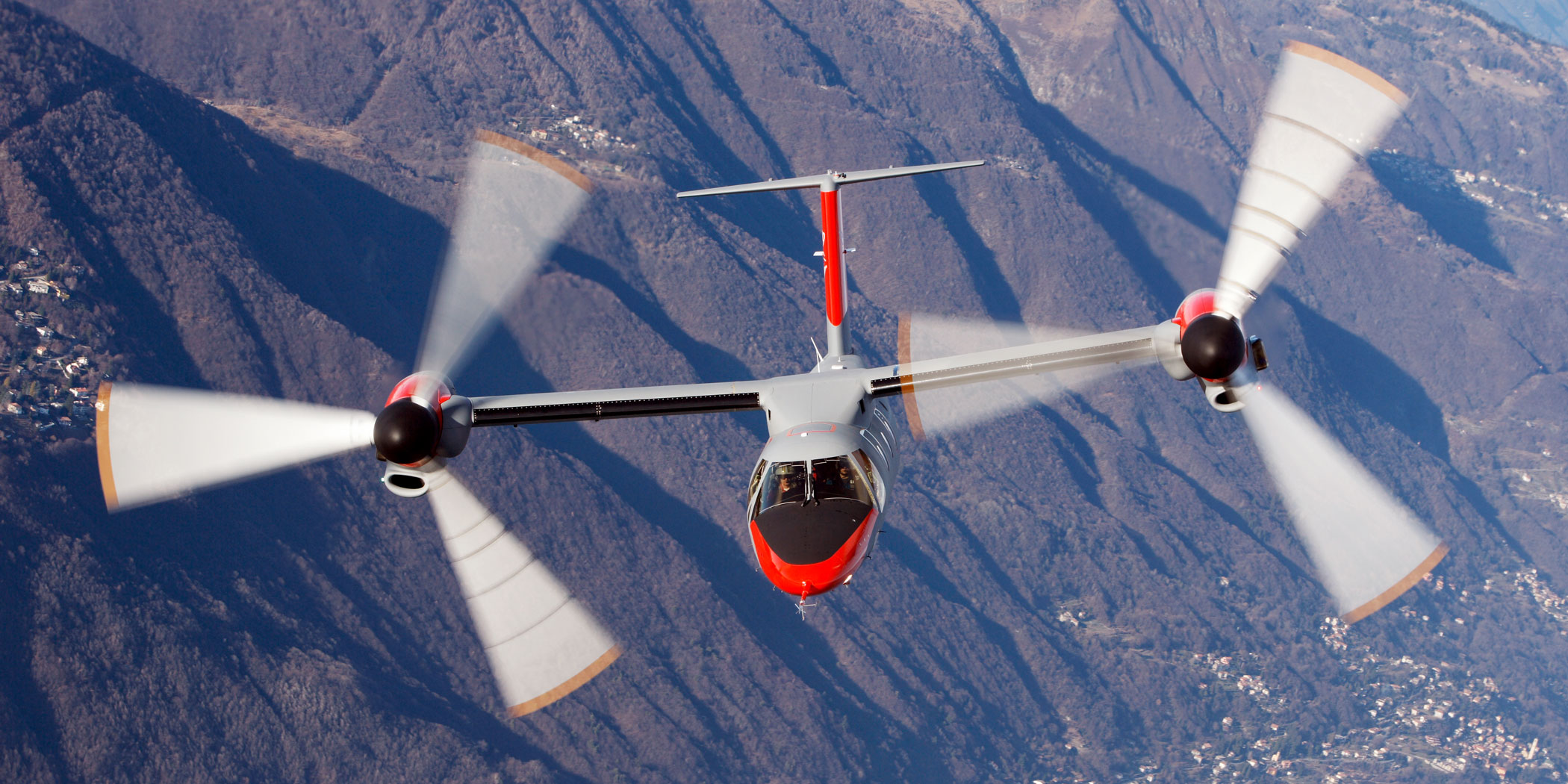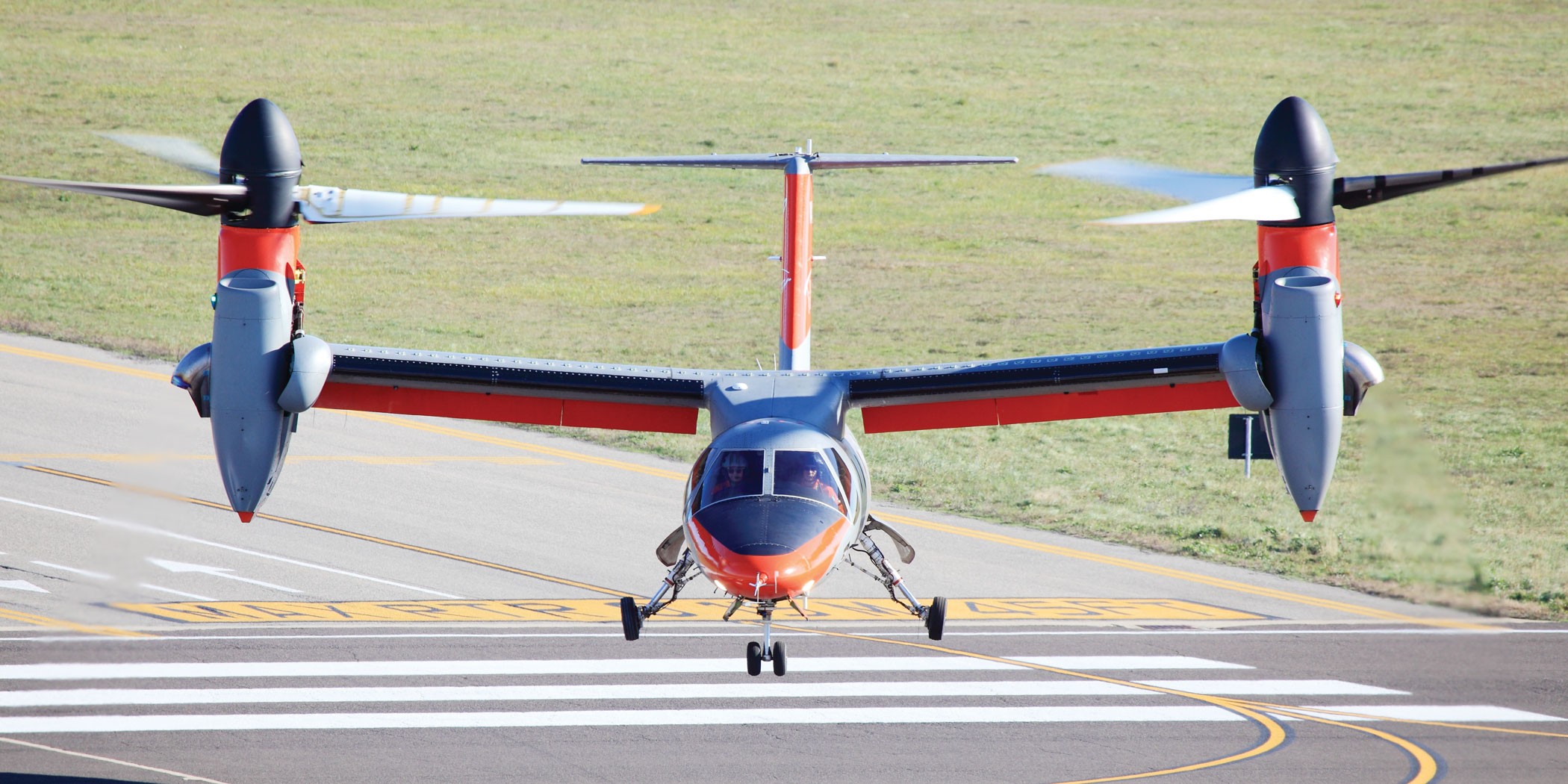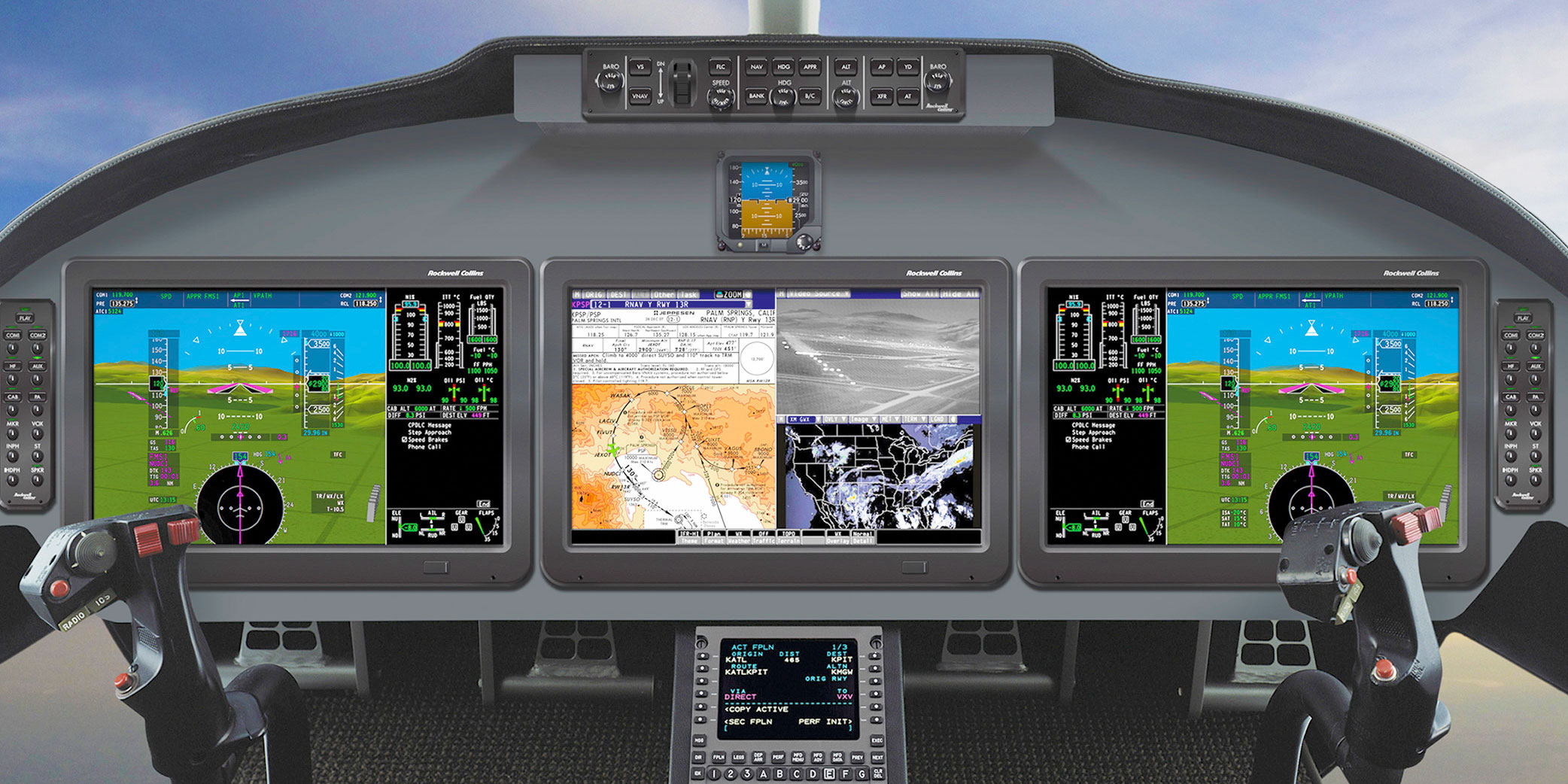
Finmeccanica’s AW 609
This tiltrotor will likely transform travel between some cities.
Manufacturers and writers often attach the word “revolutionary” to new aircraft, but the forthcoming AW609 tiltrotor from Finmeccanica’s AgustaWestland really deserves the label. The aircraft takes off and lands like a helicopter yet can achieve forward speeds of around 275 knots, on par with a fast turboprop airplane. It will likely transform personal and business travel between cities that are 700 to 1,100 nautical miles apart. In many cases, it will be faster to make these trips with the AW609 than with a helicopter or private jet.
Finmeccanica is counting on customers being willing to pay a premium for this convenience. While the AW609 will have the same cabin space as a four-to-nine-passenger, $4 to $9 million light jet, it likely will sell for around $24 million—about what you’d pay for a super-medium twin helicopter with all the bells and whistles.
Tiltrotors aren’t new, of course. They’ve been flying as research aircraft since the 1950s, and the Marine Corps’ much larger and more expensive Bell-Boeing MV-22 made its first flight in 1989 before going operational in 2007. Bell and Boeing had partnered on bringing a smaller craft to market but Boeing withdrew from the venture and Bell then partnered on the project with Finmeccanica. It was not a good marriage, and in 2011 Finmeccanica bought out Bell’s share. It then accelerated program development, beginning construction of two more prototypes to add to the pair already flying and gearing up its Philadelphia plant to handle most of the development, testing, and manufacturing. It also finished working with the FAA on creation of a special section of the Federal Aviation Regulations governing powered-lift aircraft.
By delaying the project slightly after it acquired Bell’s share, changing vendors for certain components, and doing some redesign, Finmeccanica managed to wring 10 percent of the manufacturing cost out of the aircraft, according to program manager Clive Scott. “We were unhappy with some components in terms of performance, weight, or cost,” he said, “so we have been working hard to ensure that the aircraft is not only technically acceptable but financially acceptable to the market in terms of acquisition and operating costs.”
More than 100 people are already working on the program in Philadelphia. The decision to base it there was in no small measure a function of the aircraft’s initial certification from the Federal Aviation Administration and proximity to suppliers, including Rockwell Collins (avionics) and Pratt & Whitney Canada (engines).
Thirteen years have passed since the first 609 prototype flew and development of the program has at times seemed tortuous—especially since last October, when the second prototype crashed outside Santhia, Italy, killing the pilots. The crash investigation may delay the AW609’s entry into service, which had been scheduled for 2018. By how much depends on whether the accident proves to be linked to the aircraft’s fundamental design or merely to pilot error or failure of a minor component.
But Finmeccanica remains committed to the project and customer enthusiasm hasn’t waned. “Are we going to purchase these? Absolutely!” says Jonathan Baliff, CEO of the Bristow Group, which provides helicopter services to offshore energy platforms worldwide. “This aircraft allows a level of safety and certainty. It flies above the weather and has speed and range.”
AW609 test pilots say the aircraft is easy to fly for those transitioning from either helicopters or fixed-wing aircraft. One pilot tells me the hardest thing about flying the 609 is keeping the proper mindset, given the model’s flight profile. “It changes from a fixed-wing aircraft to a helicopter in about 30 seconds,” comments pilot Paul Edwards. “So you have to fly it like a fixed-wing when it is a fixed-wing and then get ready to fly it like a helicopter. It sounds trite, but that is what it is like. The fly-by-wire system makes it very easy to fly. It flies beautifully.”
Industry veteran Mark Huber has reviewed aircraft for BJT since 2005.




